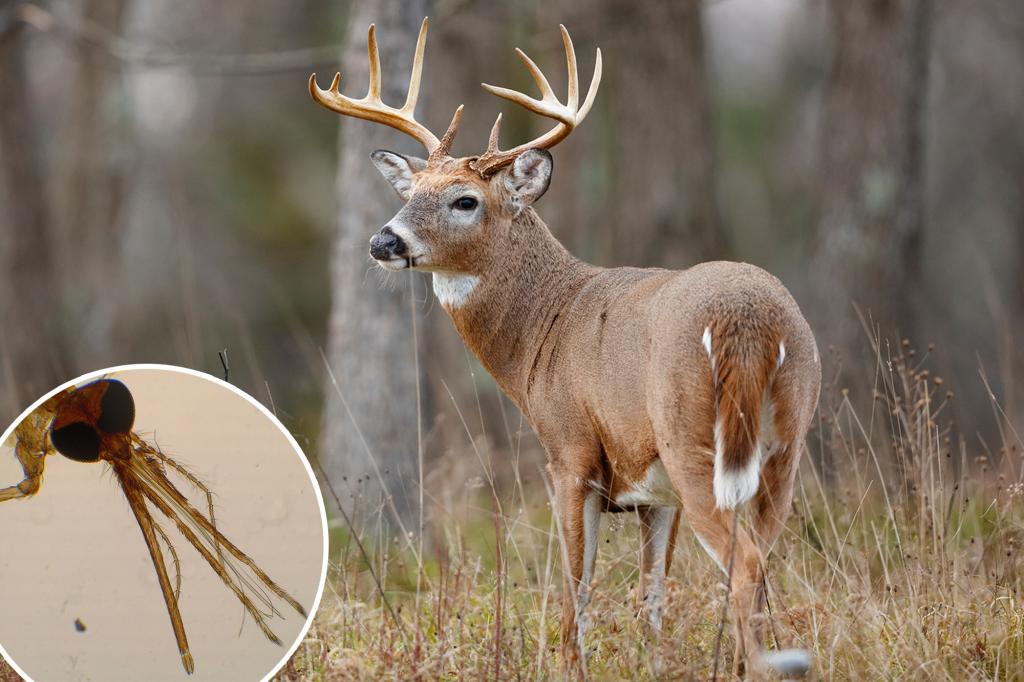The Silent Crisis Affecting America’s White-tailed Deer Population
Across several Eastern states, wildlife officials are tracking a worrying viral outbreak that’s claiming the lives of white-tailed deer in significant numbers. Epizootic hemorrhagic disease (EHD) has become a growing concern in recent weeks, with nearly 100 cases documented in Maryland alone. While the disease poses no threat to humans, its spread has prompted health departments to issue guidance for hunters who may encounter infected animals during the upcoming season. “Humans are not at risk from handling or eating the meat of affected deer,” the Maryland Department of Natural Resources reassured the public, though they caution against consuming venison from animals showing obvious signs of illness, particularly those with “large, open sores.”
EHD has established itself as a seasonal challenge throughout the Eastern United States, typically appearing in late summer and early fall when the tiny biting midges that transmit the virus are most active. These insects, colloquially known as “no-see-ums” due to their almost invisible size, deliver the virus through their bite, initiating a cascade of distressing symptoms in infected deer. The disease manifests through internal hemorrhaging, respiratory distress, noticeable swelling around the eyes, and profound fatigue that often leaves the animals weakened near water sources as they attempt to relieve fever symptoms. Wildlife experts emphasize that EHD cannot spread directly between deer, nor can humans contract it from handling infected animals—facts that provide some reassurance amid growing concerns about the outbreak’s scope.
The current EHD situation extends beyond Maryland, with Pennsylvania, Virginia, and West Virginia all reporting cases in recent weeks. While New York has not officially documented cases in 2023, the Cornell Wildlife Health Lab notes that the state has experienced EHD outbreaks annually since 2020, including a particularly severe episode in the lower Hudson Valley that claimed approximately 1,500 deer in early fall of that year. This regional pattern suggests that environmental factors may be contributing to the disease’s persistence and spread, potentially related to climate conditions that favor the breeding of the midge vectors responsible for transmission.
For hunters and wildlife enthusiasts alike, the outbreak raises complex questions about conservation, wildlife management, and the health of local ecosystems. Deer populations play a crucial role in forest dynamics, and sudden declines due to disease can ripple throughout natural communities. Wildlife management agencies monitor these outbreaks carefully not only to track the immediate impact on deer but also to understand potential long-term effects on biodiversity and habitat health. The seasonal nature of EHD means that frost typically ends outbreaks as it kills the transmitting midges, but warmer falls attributed to climate change may be extending the disease’s active period in recent years.
Despite the concerning nature of the outbreak, wildlife officials emphasize that EHD is a naturally occurring phenomenon that has existed in deer populations for generations. The disease tends to affect certain regions more severely than others, often creating localized “hot spots” where deer mortality is higher. While disturbing to witness, these outbreaks rarely threaten the overall viability of deer populations across their range. Experts note that deer have coexisted with this virus throughout their evolutionary history, and healthy populations typically recover within a few seasons even after significant losses. This resilience highlights the adaptability of wildlife in the face of disease challenges that have been part of natural systems long before human intervention.
For concerned citizens who encounter sick or dead deer, wildlife agencies recommend reporting these findings to local conservation departments rather than handling the animals. This information helps officials track the spread of the disease and implement appropriate management responses. Hunters are advised to thoroughly inspect any harvested deer for signs of illness and to follow standard safety protocols when field dressing and preparing venison. While the current EHD outbreak serves as a sobering reminder of the complex challenges facing wildlife in our changing environment, it also demonstrates the importance of science-based wildlife management and public education in navigating these natural phenomena. As we move deeper into fall and temperatures drop, the natural cycle of frost will likely bring this year’s outbreak to a close—until next season, when wildlife managers will once again monitor for signs of this persistent but manageable threat to America’s deer population.














